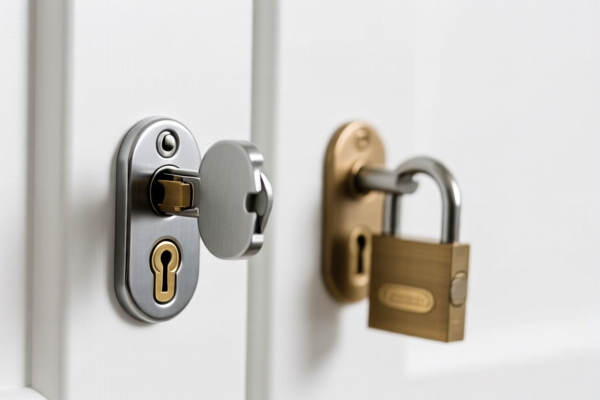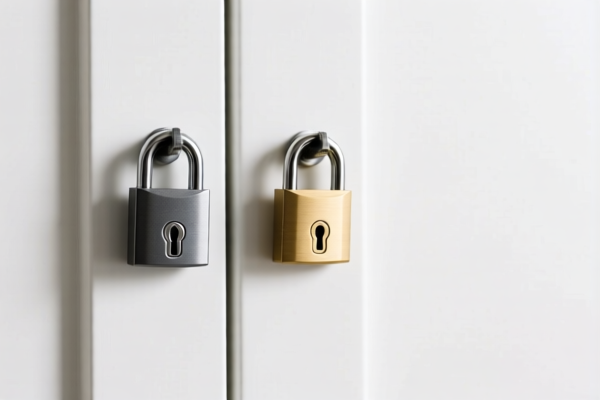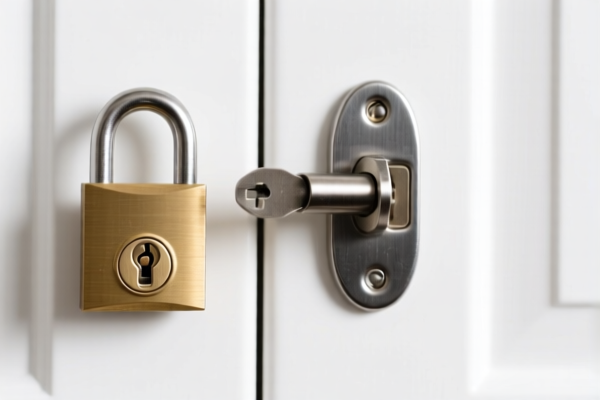| HS Code | Official Doc | Tariff Rate | Origin | Destination | Effective Date |
|---|---|---|---|---|---|
| 9606308000 | Doc | 61.0% | CN | US | 2025-05-12 |
| 9609908000 | Doc | 37.5% | CN | US | 2025-05-12 |
| 8301300090 | Doc | 43.2% | CN | US | 2025-05-12 |
| 8302426000 | Doc | 40.9% | CN | US | 2025-05-12 |
| 8302496085 | Doc | 85.7% | CN | US | 2025-05-12 |
| 7419801500 | Doc | 58.0% | CN | US | 2025-05-12 |
| 7419803000 | Doc | 58.0% | CN | US | 2025-05-12 |
| 7415390000 | Doc | 58.0% | CN | US | 2025-05-12 |
| 7415290000 | Doc | 58.0% | CN | US | 2025-05-12 |
| 8305906000 | Doc | 43.2% | CN | US | 2025-05-12 |
| 8304000000 | Doc | 33.9% | CN | US | 2025-05-12 |




Cupboard Locks
Cupboard locks are security mechanisms designed to prevent unauthorized access to the contents of cupboards, cabinets, and similar storage units. They are commonly used to protect valuable items, hazardous materials, or to secure contents from children or pets.
Material
Cupboard locks are manufactured from a variety of materials, chosen for their strength, durability, and resistance to tampering. Common materials include:
- Metal: Brass, steel, zinc alloy, and aluminum are frequently used for their robustness and resistance to forced entry. Stainless steel is preferred in environments requiring corrosion resistance.
- Plastic: ABS and polypropylene plastics are used for less demanding applications, particularly child safety locks, offering a lower cost and ease of installation.
- Combination of Materials: Many locks utilize a combination of metal and plastic, leveraging the strengths of both. For example, a metal locking mechanism housed in a plastic casing.
Purpose
The primary purpose of cupboard locks is to enhance security and prevent unwanted access. Specific applications include:
- Security: Protecting valuables (medication, jewelry, important documents) from theft.
- Child Safety: Preventing access to potentially dangerous items (cleaning supplies, tools, sharp objects).
- Hazardous Material Control: Securing chemicals, flammable liquids, or other dangerous substances.
- Inventory Control: Restricting access to specific items in a workplace or storage facility.
Function
Cupboard locks function by engaging a locking mechanism that prevents the cupboard door from opening. Common mechanisms include:
- Cam Locks: A rotating cam engages with a strike plate, securing the door. These are very common and often keyed or require a tool for operation.
- Magnetic Locks: Utilize magnets to hold the door shut, requiring a specific magnetic key or tool for release.
- Push-to-Open/Push-to-Close Latches: These locks rely on a spring-loaded mechanism that requires a specific action (pushing or pulling) to open the door.
- Sliding Bolt Locks: A bolt slides into a receiver to secure the door.
- Combination Locks: Require a numerical or alphabetical combination to unlock.
Usage Scenarios
Cupboard locks are utilized in a wide range of environments:
- Residential: Kitchen cabinets, bathroom vanities, utility closets, garages, home offices.
- Commercial: Offices, retail stores (display cases), laboratories, workshops, storage facilities.
- Industrial: Workshops, factories, warehouses, chemical storage areas.
- Healthcare: Medication cabinets, supply rooms.
- Educational Institutions: Storage cabinets, classrooms, laboratories.
Common Types
- Keyed Locks: Require a physical key for operation. Offer a higher level of security.
- Combination Locks: Utilize a numerical or alphabetical combination for access. Suitable when key control is difficult.
- Push Button Locks: Open with a specific button sequence.
- Child Safety Latches: Designed for easy installation and operation by adults, but difficult for children to open. These often use adhesive or magnetic mechanisms. Types include:
- Magnetic Locks: Utilize a magnetic key to release the latch.
- Adhesive Locks: Attach to the cupboard door and frame with adhesive.
- Spring-Loaded Latches: Require a specific action to release.
- Cam Locks with Cylinder: Feature a key cylinder for enhanced security and key control.
- Furniture Locks: Specifically designed for use with common furniture types, often with concealed mounting.
Cupboard locks generally refer to locking mechanisms used on cabinets or cupboards to secure their contents. These locks can be key-operated, combination-based, or utilize other fastening methods. They are commonly found in residential, commercial, and industrial settings for security and access control.
The following HS codes from the provided reference material may be relevant:
- 8301300090: This HS code covers padlocks and locks (key, combination or electrically operated), of base metal; clasps and frames with clasps, incorporating locks, of base metal; keys and parts of any of the foregoing articles, of base metal. Specifically, it includes locks of a kind used for furniture. The base tariff is 5.7%, with an additional 7.5% surcharge, increasing to 30.0% after April 2, 2025, resulting in a total tariff of 43.2%.
- 8302426000: This HS code pertains to base metal mountings, fittings and similar articles suitable for furniture, doors, staircases, windows, blinds, coachwork, saddlery, trunks, chests, caskets or the like; base metal hat racks, hat-pegs, brackets and similar fixtures; castors with mountings of base metal; automatic door closers of base metal; and base metal parts thereof. It specifically covers other mountings, fittings and similar articles, and parts thereof, suitable for furniture. The base tariff is 3.4%, with an additional 7.5% surcharge, increasing to 30.0% after April 2, 2025, resulting in a total tariff of 40.9%.
- 8302496085: This HS code covers base metal mountings, fittings and similar articles suitable for furniture, doors, staircases, windows, blinds, coachwork, saddlery, trunks, chests, caskets or the like; base metal hat racks, hat-pegs, brackets and similar fixtures; castors with mountings of base metal; automatic door closers of base metal; and base metal parts thereof. It specifically covers other mountings, fittings and similar articles, and parts thereof, of iron or steel, of aluminum or of zinc. The base tariff is 5.7%, with an additional 25.0% surcharge, increasing to 30.0% after April 2, 2025, for steel and aluminum products, resulting in a total tariff of 85.7%.
Important Note: When declaring goods under HS code 8302496085, please note the need to verify the material composition (iron, steel, aluminum, or zinc) as the surcharge rate differs based on the material. The surcharge is 25% for steel and aluminum products.
Customer Reviews
No reviews yet.